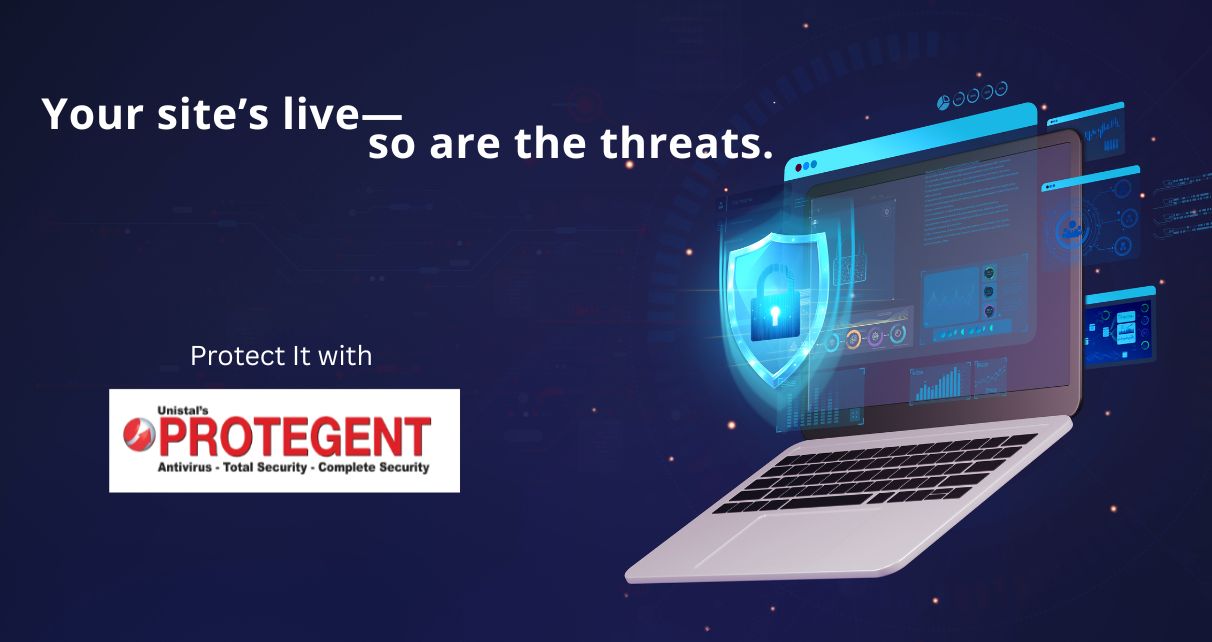
Website Security: Is Your Business at Risk?
Let’s be real for a second — cyber threats today aren’t just an “IT department issue.” They’re a full-blown business crisis waiting to happen.
You might think your business is too small to be on a hacker’s radar or that your remote team has things under control. But here’s the truth: if your website is live, your data is online, and your team uses devices to connect — you’re already a target.
And the numbers back it up.
According to the 2024 Cybersecurity Almanac, cybercrime will cost the world $9.5 trillion in damages this year — that’s more than the global trade of all major illegal drugs combined. And get this: a cyberattack occurs every 39 seconds.
For small and mid-sized businesses, the situation is even more chilling. A recent Verizon Data Breach Investigation Report found that:
- 43% of all data breaches target small businesses.
- 74% of these breaches involve the human element, like clicking a bad link or using a weak password.
- The average downtime from a ransomware attack is 21 days, and many businesses never fully recover.
So if you’re thinking, “We’re probably fine,” it might be time to rethink that.
Your website isn’t just a homepage — it’s a virtual front door. And just like in the real world, if you don’t lock it properly, someone can walk right in, steal what they want, and leave you to clean up the mess.
The New Cyber Reality
The shift to remote work during the pandemic? It was a blessing in many ways, but it also opened many digital doors. Cybercriminals noticed — and they didn’t waste time walking right through them. According to IBM’s 2024 report, the average cost of a data breach is now $4.45 million — the highest it’s ever been. And small businesses aren’t flying under the radar either. A whopping 43% of cyberattacks target small businesses, mostly because they’re easier to hit.
Let’s break down some of the biggest website and cybersecurity risks businesses are facing today — and how you can fight back.
1. Ransomware: Hold Your Data Hostage
Ransomware is brutal. It locks you out of your system and demands payment, usually in crypto — to get your files back. In some cases, even paying the ransom doesn’t guarantee recovery.
In 2021, 80% of global businesses reported some form of ransomware attack. Fast forward to 2024, and now we’re seeing an average ransom payout of over $2 million. That’s not a typo.
What you can do:
- Layer your security: Don’t just rely on one tool. Use antivirus, firewalls, email filters, and endpoint protection together.
- Back it up: Keep secure, offline backups of all your data. And yes, test them regularly.
- Revisit remote policies: If employees use their own devices (BYOD), make sure they’re secured — or better yet, use company-issued devices with a VPN.
2. Phishing: It’s Not Just Spam Anymore
Phishing has come a long way from those “You’ve won a million dollars!” emails. These days, cybercriminals are smart. They do their homework and tailor attacks — also called spear phishing — to make them look legit.
Fake emails from “vendors,” bogus invoices, even voice phishing (“vishing”) are all fair game. Over 80% of reported security incidents involve phishing.
What you can do:
- Scrub your digital footprint: Avoid listing full names, contact info, and emails publicly.
- Use email filters: They’re not bulletproof, but they reduce risk.
- Train your team: If an email feels off — rushed tone, strange link, weird grammar — it probably is. And always check if that URL starts with “HTTPS.”
3. Weak Passwords: The Digital Skeleton Key
Let’s be honest — we’ve all reused a password at some point. But for businesses, it’s a ticking time bomb. Hackers use brute-force tools to guess credentials, and if one works, chances are it’ll work on five other apps too.
According to a 2024 report, 19% of enterprise professionals still use easy or recycled passwords. That’s all a hacker needs.
What you can do:
- Enforce strong password policies: At least 15 characters, mixed types, and changed regularly.
- Get a password manager: No more Post-it notes or “Password123.”
- Turn on MFA: Multi-Factor Authentication adds a second layer (like a code to your phone) — a game-changer for security.
4. Mobile Devices: Business On-the-Go, Risk On-the-Rise
With more work being done on phones and tablets, the security gap has widened. These devices leave the safety of your network and can be lost, stolen, or compromised without you even knowing.
And here’s the kicker: mobile banking malware is up 50%, and many businesses still don’t have mobile protection policies in place.
What you can do:
- Enable device encryption and screen locks (PINs, biometrics, etc.).
- Track and wipe: All devices should be remotely wipeable if lost.
- Update software regularly and backup mobile data too.
- Create a mobile security policy: Set expectations, get sign-offs, and update them regularly.
5. Human Error: Still the #1 Threat
We’d love to blame hackers for everything, but sometimes the problem is… well, us. Clicking the wrong link. Sending sensitive info to the wrong person. Writing a password on a sticky note.
IBM reports that 74% of breaches come down to human error. So it’s not just about tech — it’s about culture.
What you can do:
- Offer cybersecurity training (and keep it fresh — no snoozy slide decks).
- Minimise access: Only give employees access to what they need.
- Reduce password fatigue: Fewer logins, smarter tools, and biometrics where possible.
Bonus Risk: Outdated Systems
Still running software from 2015? It might be full of security holes. Hackers love unpatched systems. Make sure your CMS (like WordPress), plugins, and operating systems are all up to date.
So, What’s the Fix?
There’s no silver bullet — but there are all-in-one solutions that help you stay ahead of threats without needing a dedicated IT army.
Meet Protegent Total Security

If you’re looking for comprehensive protection that goes beyond just antivirus, Protegent Total Security covers all the bases:
- Ransomware protection: Safeguards your personal files from unauthorised access, modifications, or encryption by malicious actors, ensuring your data remains secure.
- Cloud protection and backup: Utilises cloud technology to securely store and protect your files and documents, defending against ransomware, malware, and potential data theft.
- Web control to block dangerous sites: Restricts access to risky websites, preventing exposure to harmful content and reducing the risk of identity theft and malware infections.
- Safe online transactions: Ensures secure internet banking, online shopping, and other financial transactions, protecting your sensitive financial information from cyber threats.
- Parental & employee monitoring: Allows monitoring and controlling internet usage, helping to restrict access to inappropriate content and manage time spent online, promoting safe browsing practices.
- Data loss prevention: Incorporates proactive data recovery features, protecting against data loss scenarios caused by accidental deletion, system crashes, or other unforeseen events.
- Firewall and network monitoring: Employs an advanced bidirectional firewall to monitor and control both incoming and outgoing network traffic, blocking unauthorised access and potential threats.
- 30% more features than typical antivirus tools: Offers additional functionalities beyond standard antivirus solutions, providing enhanced protection and a comprehensive security suite to meet diverse user needs.
Basically, it does what your business needs — without breaking the bank or drowning you in tech jargon.
Final Thought
You don’t have to be a cybersecurity expert to protect your business — but you do have to stay alert. Start with the basics, build good habits, and invest in the right tools.
Because the question isn’t if your website will be targeted — it’s when. The good news? You can be ready with Protegent.




